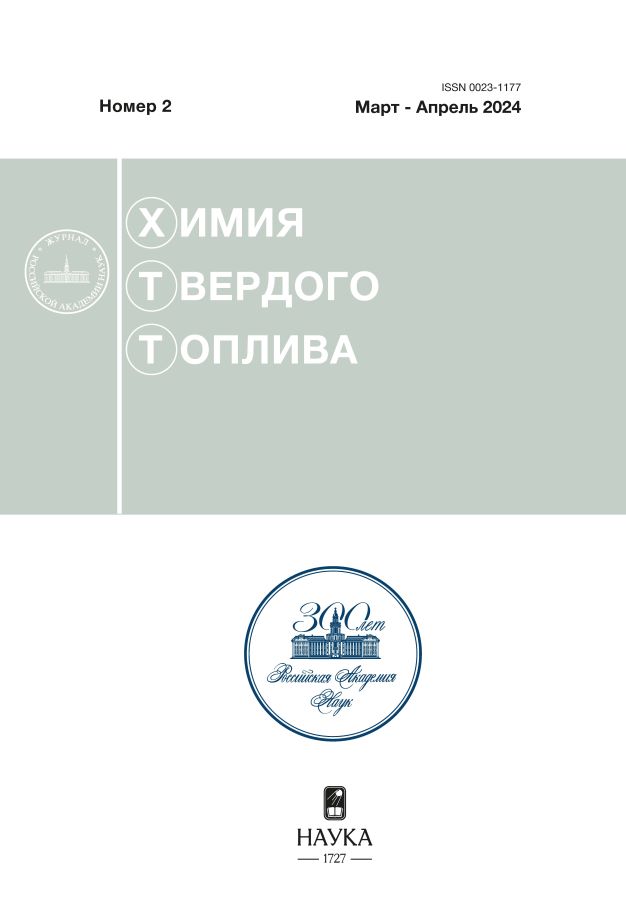The Effect of the Inhibitory Composition on the Composition of Paraffin Hydrocarbons in Oil Sediments
- 作者: Prozorova I.V.1, Yudina N.V.1
-
隶属关系:
- Institute of Petroleum Chemistry, Siberian Branch of the Russian Academy of Sciences
- 期: 编号 2 (2024)
- 页面: 10-15
- 栏目: Articles
- URL: https://rjeid.com/0023-1177/article/view/661564
- DOI: https://doi.org/10.31857/S0023117724020037
- EDN: https://elibrary.ru/OMSSMG
- ID: 661564
如何引用文章
详细
The effect of an inhibitory composition based on an amphiphilic polymer of polyacrylate and stearic acid on the composition of paraffinic hydrocarbons in asphalt-resin-paraffin deposits (ARPD) of high-paraffin oil was studied. It is shown that with the addition of an amphiphilic polymer and a composition to oil, differences are observed in the nature of their molecular mass distribution of paraffinic hydrocarbons of the surfactants. The action of the polymer leads to a decrease in the content of hydrocarbons of the composition C16–C21 and an increase in the proportion of high-molecular hydrocarbons C22–C34. The use of stearic acid as a surfactant in the composition, on the contrary, reduces the amount of high molecular weight paraffin hydrocarbons.
全文:
作者简介
I. Prozorova
Institute of Petroleum Chemistry, Siberian Branch of the Russian Academy of Sciences
编辑信件的主要联系方式.
Email: piv@ipc.tsc.ru
俄罗斯联邦, Tomsk
N. Yudina
Institute of Petroleum Chemistry, Siberian Branch of the Russian Academy of Sciences
Email: natal@ipc.tsc.ru
俄罗斯联邦, Tomsk
参考
- Eke W., Kyei S. K., Achugasim O., Ajienka J. A. // Applied Petrochem. Res. 2021. № 2. Р. 199. https://doi.org/10.1007/s13203-021-00271-1
- Bin X. // Petrol. Sci. Tech. 2018. V. 36. P. 1635. https://doi.org/10.1080/10916466.2018.1496113
- Zhao Y., Kumar L., Paso K., Safieva J. // Energy Fuels. 2012. V. 26. № 10. P. 6323. https://doi.org/10.1021/ef3012454
- Singh P., Venkatesan R., Fogler H.S. Nagarajan N. // AIChE Journal. 2000. V. 46. № 5. Р. 1059. https://doi.org:10.1002/aic.690460517
- Vignati E., Piazza R., Visintin R.F.G., Lapasin R, D’Antona P., Lockhart T.P. // Physics: Condensed Matter. 2005. V. 17. № 45. P. 3651. https://doi.org:10.1088/09538984/17/45/061
- Quan Q., Wang W., Wang P., Yang J. // Brazilian J. Chem. Eng. 2016. V. 33. № 4. Р. 1055. https://doi.org:10.1590/0104-6632.20160334s20150023
- Visintin R.F.G., Lapasin R., Vignati E., D’Antona P. // Langmuir. 2005. V. 21. № 14. P. 6240. https://doi.org/10.1021/la050705k
- Вidmus H.O., Mehrotra A.K. // Energy Fuels. 2009. V. 23. № 6. Р. 3184. https://doi.org:10.1021/ef900224r
- Lee J., Zahir L.Н.A., Larsson R.G. // Energy Fuels. 2020. V. 34. № 10. P. 12330. https://doi.org/10.1021/acs.energyfuels.0c02184
- Cabanillas J.P., Leiroz A.T., Azevedo L.F.A. // Energy Fuels. 2016. V. 30 № 1. Р. 1. https://doi.org/10.1021/acs.energyfuels.5b02344
补充文件











